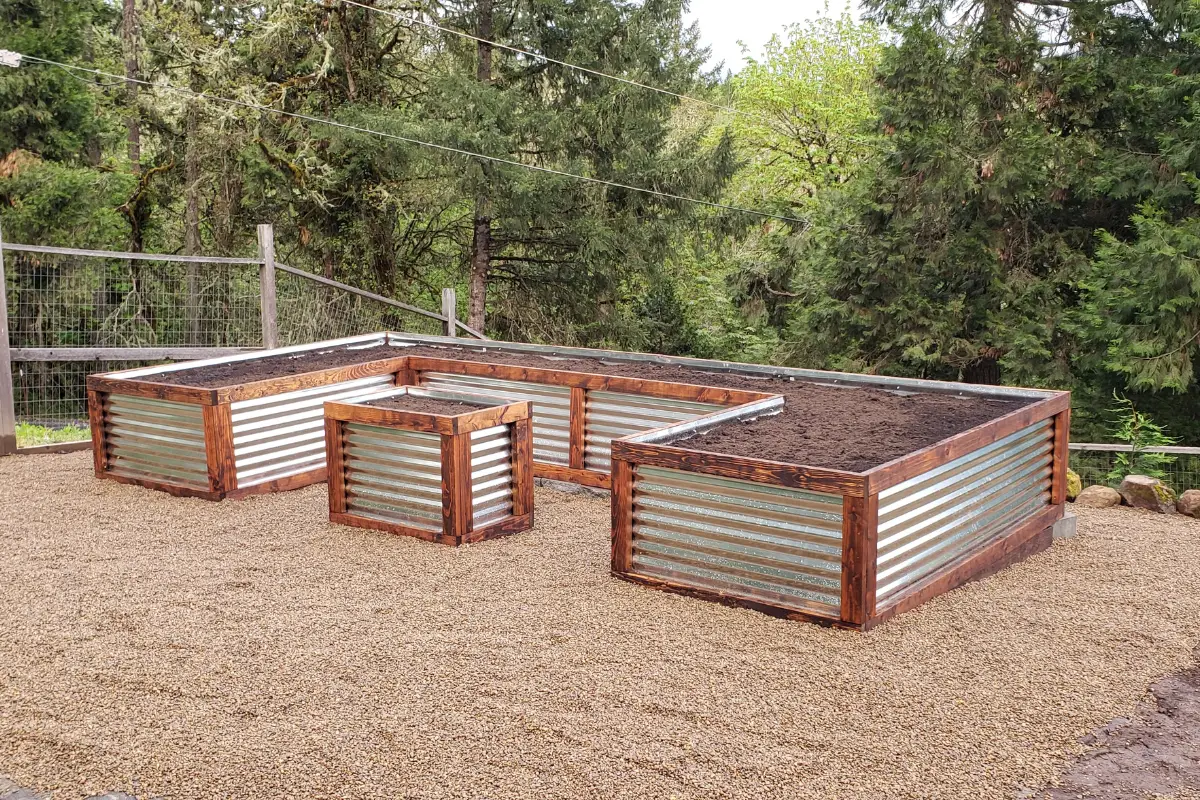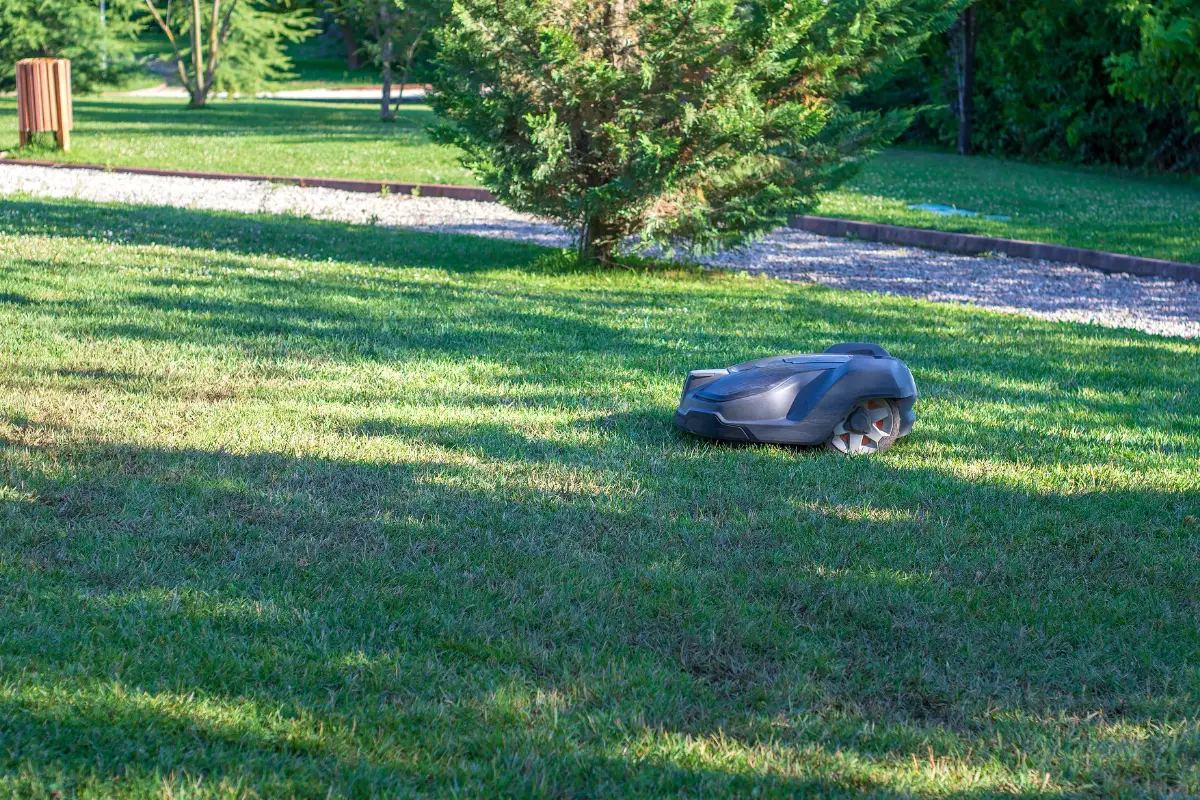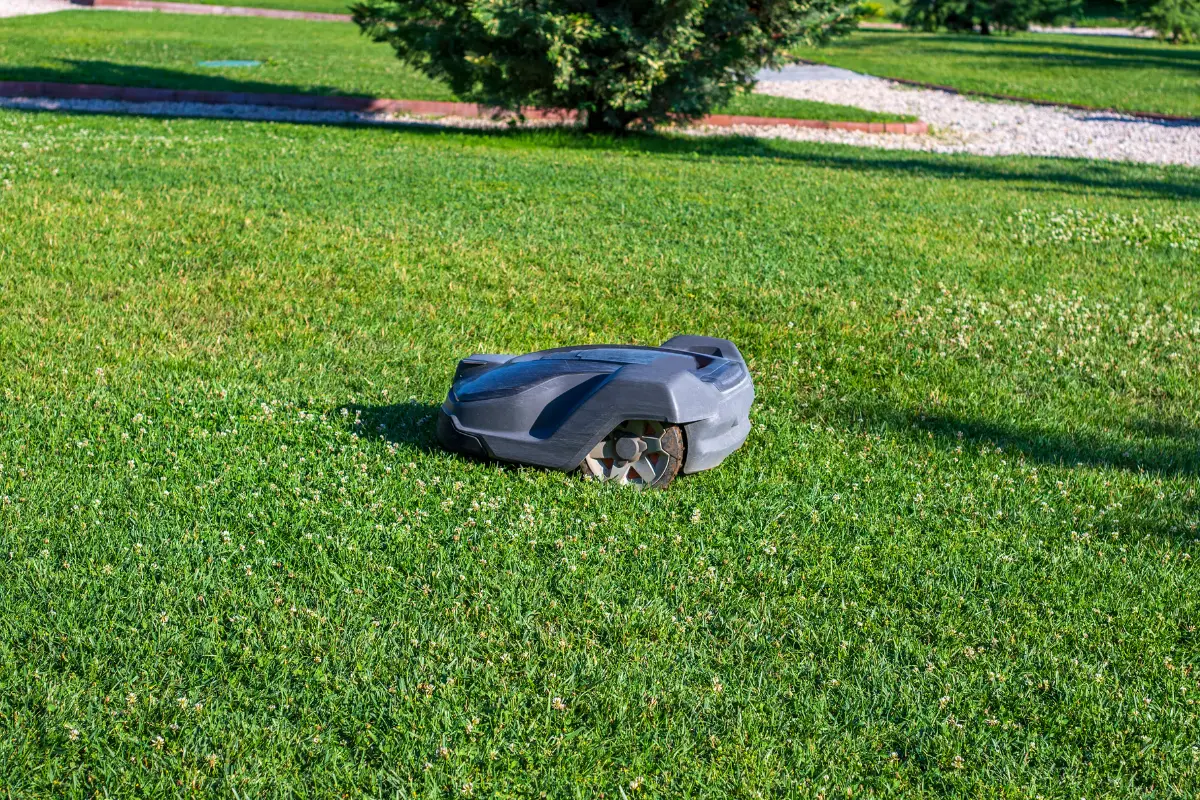Ceramic plant pots are a popular choice for plants, especially in the winter months. These pots are made from clay that has been fired at high temperatures, making them strong and durable.
However, they can still be prone to cracking in extremely cold temperatures.
In this article, I’ll explain why ceramic pots are great for Winter plants and share some tips to prevent any cracking due to extreme weather conditions.
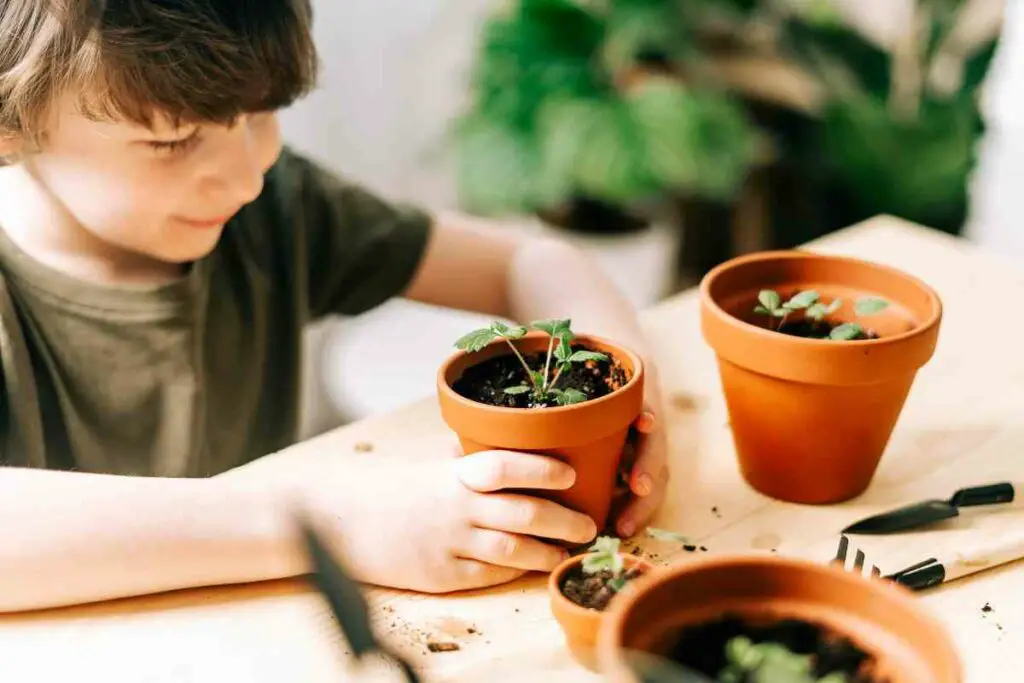
To protect your ceramic pots from cracking in the winter, it is important to follow a few simple steps.
Table of Contents
Location Through Winter For Your Ceramic Pots
Make sure to bring your potted plants indoors if possible in extreme cold or move them to a sheltered area before the first frost. This will help to prevent the pot from being exposed to freezing temperatures.
Additionally, you should avoid letting the soil in the pot dry out, as this can cause the pot to crack due to the contraction of the dry soil.
If you cannot bring your plants indoors you should look to create a barrier or shade from extreme cold and winds.
Examples: Surround the pot with insulation, place something in front of the pot like wood or relocate the pot. You should also consider raising the pot off the ground. I place mine on top of garden twigs.
Choosing The Best Ceramic Pots For Winter
There are a few factors to consider when choosing the best type of ceramic pot for winter:
- Size: It is important to choose a pot that is the right size for your plant. A pot that is too small may not provide enough space for the roots to grow, while a pot that is too large may hold too much moisture and cause the roots to rot.
- Thickness: As mentioned earlier, pots with thicker walls will provide better insulation for the soil and be less prone to cracking in cold temperatures.
- Drainage: Make sure the pot has drainage holes to allow excess water to drain out. This will prevent the soil from becoming waterlogged and help to prevent root rot.
- Material: While ceramic pots are a good choice for winter, you may also want to consider pots made from other materials such as plastic or metal. These materials tend to be more durable and less prone to cracking in cold temperatures.
In general, the best type of ceramic pot for winter is one that is the right size for your plant, has thick walls, has drainage holes, and is made from a durable material.
What’s The Lowest Temperature They Can Be Used In?
The lowest temperature that a ceramic pot can be used in will depend on the specific type of ceramic and the thickness of the pot. In general, however, ceramic pots should not be exposed to freezing temperatures as this can cause the pot to crack.
Wrap Your Pots Up Through Winter
- Bubble wrap: Cut a piece of bubble wrap to fit around the pot and secure it with tape. This will provide insulation and help to protect the pot from extreme cold temperatures.
- Towels or blankets: Wrap the pot in a thick towel or blanket to provide insulation and protect it from the cold.
- Burlap or other natural fibers: Cover the pot with burlap or other natural fibers to provide insulation and protect it from the cold.
- Plastic wrap: Cover the pot with plastic wrap and secure it with tape. This will help to protect the pot from the elements and prevent moisture from getting inside.
- Box: Place the pot inside a box and fill the space around it with packing materials such as bubble wrap or newspaper to provide insulation.
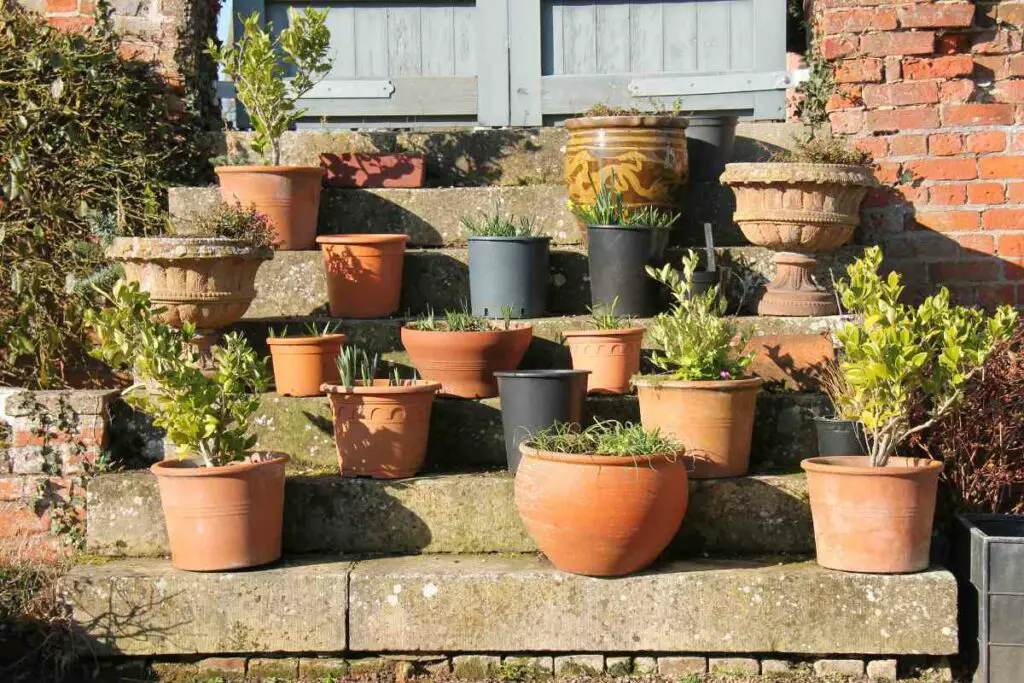
The Benefits of Using a Ceramic Pot vs. Plastic or Metal Pot
There are several benefits of using a ceramic pot for plants:
- Aesthetics: Ceramic pots can add a decorative touch to your home or garden. They come in a wide range of colors, shapes, and sizes, making it easy to find one that fits your personal style.
- Durability: When properly cared for, ceramic pots can be very durable and last for many years.
- Breathability: Ceramic pots are porous, which allows air to circulate around the roots of the plant. This can be beneficial for some plants, as it can help to prevent root rot and improve the overall health of the plant.
- Weight: Ceramic pots are heavier than plastic pots, which can be an advantage for plants that are prone to tipping over. The added weight of the pot helps to keep the plant stable.
However, there are also some potential drawbacks to using ceramic pots:
- Price: Ceramic pots tend to be more expensive than plastic or metal pots.
- Fragility: Ceramic pots can be fragile and may crack or break if they are dropped or bumped.
- Temperature sensitivity: Ceramic pots may be prone to cracking in extreme cold temperatures.
Overall, the decision of whether to use a ceramic pot, plastic pot, or metal pot will depend on your personal preferences and the needs of your plants.
Does Painting Ceramic Plant Pots Affect Them?
Painting ceramic plant pots can potentially affect them in a few ways:
- Weight: Adding multiple layers of paint to a ceramic pot can add weight to the pot, which may make it more difficult to move around especially for elderly people and people with limited mobility
- Breathability: Depending on the type of paint used, it may block the pores of the ceramic and reduce the pot’s breathability. This can potentially affect the health of the plant, as the lack of air circulation may lead to root rot or other issues.
- Durability: Some paints may be more durable than others and may be more resistant to chipping or peeling.
- Toxicity: Some paints may contain toxic chemicals that could potentially leach into the soil and harm the plant. It is important to use non-toxic, water-based paints for ceramic plant pots.
- Aesthetics: Painting a ceramic pot can give it a new look and add a personal touch to your home or garden.
Overall, painting ceramic plant pots can have both positive and negative effects, depending on the type of paint used and how it is applied. But it can add a layer of protection from the cold.
Are Ceramic Plant Pots Better For The Environment Than Plastic?
There are some pros and cons to using Ceramic pots for plants and here are just a few.
- Durability: Ceramic pots are generally more durable than plastic pots and can last for many years with proper care. This means that they may have a longer lifespan and require fewer replacements, which can be better for the environment.
- Recyclability: Both ceramic and plastic pots can be recycled, but the recycling process for ceramic pots is often more complex and costly. This means that ceramic pots may be less likely to be recycled in practice.
- Carbon footprint: The production of ceramic pots can have a larger carbon footprint than the production of plastic pots due to the energy required to fire the clay at high temperatures.
- Chemical leaching: Some types of plastic pots may contain chemicals that can leach into the soil and potentially harm the plant or the environment. Ceramic pots do not have this risk.
Here Are A Few Suitable Pots
Prices pulled from the Amazon Product Advertising API on:
Product prices and availability are accurate as of the date/time indicated and are subject to change. Any price and availability information displayed on [relevant Amazon Site(s), as applicable] at the time of purchase will apply to the purchase of this product.
Prices pulled from the Amazon Product Advertising API on:
Product prices and availability are accurate as of the date/time indicated and are subject to change. Any price and availability information displayed on [relevant Amazon Site(s), as applicable] at the time of purchase will apply to the purchase of this product.
Prices pulled from the Amazon Product Advertising API on:
Product prices and availability are accurate as of the date/time indicated and are subject to change. Any price and availability information displayed on [relevant Amazon Site(s), as applicable] at the time of purchase will apply to the purchase of this product.
Final Thoughts
In conclusion, ceramic pots are a popular choice for plants due to their aesthetics, durability, and breathability. However, they can be prone to cracking in extremely cold temperatures and may be more fragile than pots made from other materials.
In my experience, I would only consider spending the extra money on ceramic pots if I am able to protect them through the coldest months.
If you live in a country where temperatures reach -10 or below. I would look at other options.
For most countries, ceramic pots are fine and with a little care and attention through the cold spells, you’ll have amazing-looking pots, that add a splash of color to your garden and are better for the environment.
- How to Build a Planter Box for Bamboo: A Step-by-Step Guide

- Can Robotic Lawnmowers Handle Steep Slopes?

- Do You Need a Specific Lawn for a Robotic Lawnmower? Expert Advice

- Are Robotic Lawnmowers Safe for Pets and Children? Safety Features of Robotic Lawnmowers

- Why Use Robotic Lawnmowers? Advantages of Using a Robotic Lawnmower

- Is the GARDENA SILENO City 300 Cordless or Corded? A Clear Answer































